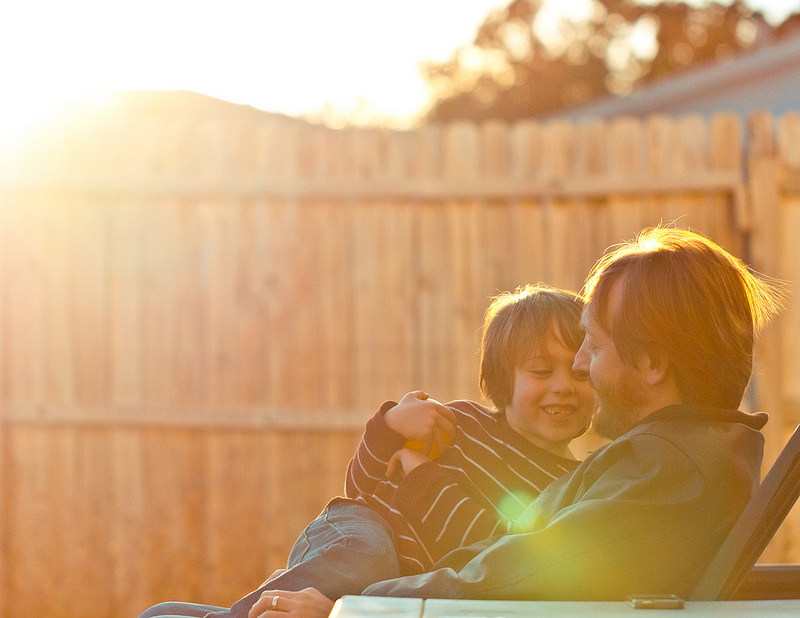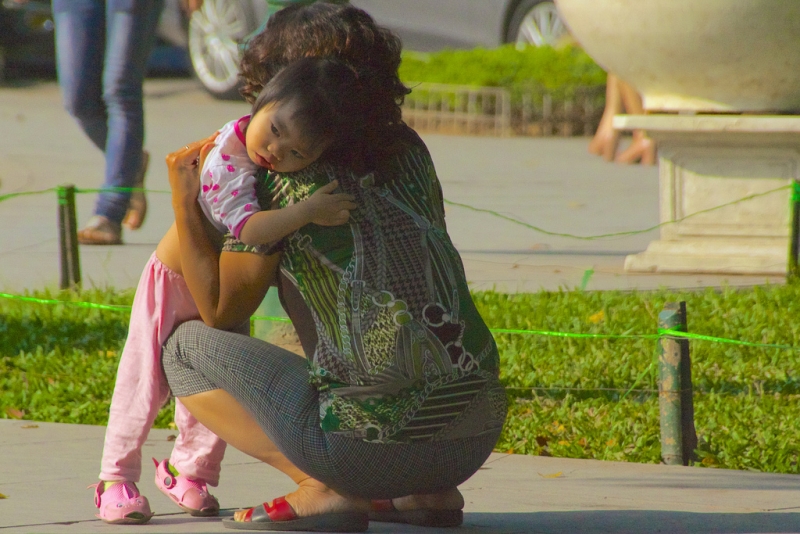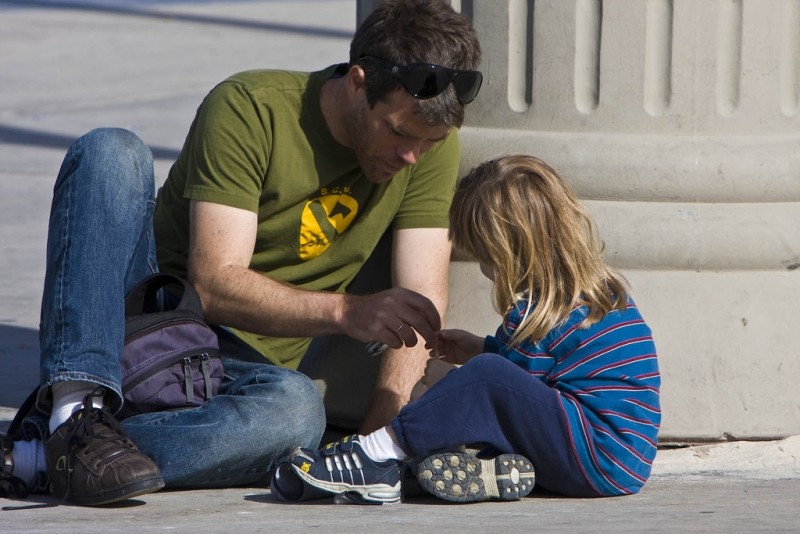 All children misbehave. It is part of growing up. How this behavior is handled by the adults in a child’s life guides and shapes their future behavior. Properly handled, a negative incident turns into an opportunity for growth and development. Improperly handled, punitive discipline can be damaging.
All children misbehave. It is part of growing up. How this behavior is handled by the adults in a child’s life guides and shapes their future behavior. Properly handled, a negative incident turns into an opportunity for growth and development. Improperly handled, punitive discipline can be damaging.
Photo credit: mdanys via Foter.com / CC BY
What is the best form of discipline for all ages?
As a former preschool teacher, current substitute teacher, and parent of a special needs child and strong-willed daughter, I’ve tried out many forms of discipline, even ones I should not have. What I have learned is to properly guide children’s behavior, it takes a lot of time and energy. This time and energy is well-invested.
My daughter a most challenging toddler and grade schooler! She is now in high school. We used to say if she used her strong will for good, it would take her far, but if used for evil…We were reflecting together the other day about our relationship, who we used to butt heads a lot and argue! Used to! I have a loving, respectful, responsible teenager! I am so thankful. Wouldn’t you rather deal with a difficult strong-willed toddler than a teenager when behavior choices could be more harmful?
We were reflecting together the other day about our relationship, how we used to butt heads a lot and argue! Used to! I have a loving, respectful, responsible teenager! I am so thankful. Wouldn’t you rather deal with a difficult strong-willed toddler than a teenager when behavior choices could be more harmful?
Wouldn’t you rather deal with a difficult strong-willed toddler than a teenager?
The very definition of “discipline” is a problem: “Control that is gained by requiring that rules or orders be obeyed and punishing bad behavior.”((http://www.merriam-webster.com/dictionary/discipline))
The best forms of discipline do not use punishment. Neurologists and psychologists agree punishment does not alter future behavior positively, in fact, it almost ensures more negative behavior will follow. Why? Take for example the long-standing technique of timeouts.
Photo credit: Lotus Carroll via Foter.com / CC BY-NC-SA
Are timeouts effective forms of discipline?
It depends. The behaviorist B.F. Skinner created the timeout.((http://www.pbs.org/newshour/updates/column-why-you-should-never-use-timeouts-on-your-kids/))((https://www.psychologytoday.com/blog/real-men-dont-write-blogs/201007/bf-skinner-and-the-hopelessness-it-all)) Melissa Standridge of the Department of Educational Psychology and Instructional Technology, University of Georgia explains:
Skinner developed a more comprehensive view of conditioning, known as operant conditioning. His model was based on the premise that satisfying responses are conditioned, while unsatisfying ones are not. Operant conditioning is the rewarding of part of a desired behavior or a random act that approaches it. Skinner remarked that “the things we call pleasant have an energizing or strengthening effect on our behavior” (Skinner, 1972, p. 74). Through Skinner’s research on animals, he concluded that both animals and humans would repeat acts that led to favorable outcomes, and suppress those that produced unfavorable results (Shaffer, 2000)((http://epltt.coe.uga.edu/index.php?title=Behaviorism))
The problem with Skinner’s behaviorism and punishing discipline techniques like timeouts is it oversimplifies it. It may work great for training a dog, but humans are more complex. In fact, Skinner has been called the “most dangerous psychologist ever”. George Dvorsky explains:
..he grossly underplayed the role of biology in forging and regulating human behavior, dismissing the burgeoning fields of behavioral genetics, evolutionary psychology, and cognitive science. Skinner argued that humans don’t really think — that they merely respond to environmental cues. ((http://io9.gizmodo.com/why-b-f-skinner-may-have-been-the-most-dangerous-psych-1548690441))
A recent column on PBS Newshour “Why you should never use timeouts on your kids” explores why this form of discipline is outdated and not effective citing evidence from parenting instructor Linda Hatfield and child psychologist Vanessa LaPointe:
All punishments are ineffective, Hatfield went on to say, because the vast majority of kids don’t misbehave; they behave. They behave like kids. They don’t do things to be bad; they do things because those things are age-appropriate, or because they’re still learning, or because they’re not getting some basic need met. Maybe they are hungry or tired; maybe they are overstimulated or overwhelmed; maybe they need a hug. Or maybe they just don’t know how to process whatever emotion they’re feeling.
“All behavior,” Hatfield said, “is communication.”…
Punishment in any form is harmful, LaPointe said, because “it takes the core need of the child… and uses it as a bargaining chip.” A child has a lot of core needs, she said, but one of the most vital is emotional attachment — the very thing parents sacrifice when they place their kids in timeouts.
“The more you use punishments to respond to behavior, the more you are actually escalating behavior and creating a reality where you have more behavior problems,” LaPointe said.((http://www.pbs.org/newshour/updates/column-why-you-should-never-use-timeouts-on-your-kids/))
Unfortunately, there are many articles like the one above espousing the negative qualities of timeouts, but they often leave out the essential information about what to do instead. Here are nine discipline methods that are better than timeouts and will reduce the urge to use them.
Photo credit: Lotus Carroll via Foter.com / CC BY-NC-SA
9 discipline methods better than timeouts
1. Talk to your child. Can you identify what they need or want?
What is your child trying to communicate to you through their behavior? Taking the time to lovingly talk to a child in distress can be very revealing. The child gets the message that you truly care, that your love is unconditional and that you are there to support them. You may not solve the problem, but your child will feel listened to and perhaps chose a different way to communicate their needs in the future.
Of course, children can’t get everything they want. I remember my daughter having a smack down huge tantrum in a store over wanting a pair of high-heeled shoes. I carried her out kicking and screaming. Then we discussed it in the privacy of the car. Just acknowledging you understand their want or need can go a long way to settling the situation.
2. Examine the antecedent. What happened right before the negative behavior? What was the consequence?
Sometimes there are triggers that consistently set a child off. In the above high-heeled shoe example, I had maxed out my daughter running errands. Sometimes these situations are unavoidable, sometimes they are not. By identifying the antecedent to the negative behavior, at least you can prepare if not avoid the situation. If you can prevent it, such as taking a break from running errands at a park or getting ice cream, then it’s a win! It’s also important to consider the consequence. Is the consequence somehow reinforcing the behavior? Is the child getting attention from you it needs, even if it is negative?
By identifying the antecedent to the negative behavior, at least you can prepare if not avoid the situation. If you can prevent it, such as taking a break from running errands at a park or getting ice cream, then it’s a win! It’s also important to consider the consequence. Is the consequence somehow reinforcing the behavior? Is the child getting attention from you it needs, even if it is negative?
It’s also important to consider the consequence. Is the consequence somehow reinforcing the behavior? Is the child getting attention from you it needs, even if it is negative?
Photo credit: minoru karamatsu(柄松 稔) via Foter.com / CC BY
3. Give your child more attention. Give them your full attention.
Unfortunately, negative attention is easier to get than positive attention. Children with chronic misbehavior often just need more attention. They don’t know how to get the positive behavior they need, so they misbehave.
Giving someone your full attention is challenging in this age of iPhones and busy lives. If you are thinking about doing the laundry, making dinner, or Facebook while talking to your child, then you are not giving them your full attention. They know it.
I noticed that homework time with my son was a struggle because I was thinking about what I had to do next. He could tell I was not fully present. Once I became aware of this and committed to giving him my full attention during homework, the struggles lessened.
Photo credit: Ed Yourdon via Foter.com / CC BY-NC-SA
4. Apologize when you mess up. Discuss your own misbehaviors
To err is human. We all mess up. We may lose it and yell at our children. We may take out frustrations on our children. We may overreact at times.
When we are open and honest about our own misbehaviors, children learn. When we apologize, it teaches them it’s ok to make mistakes. It’s important to say you are sorry.
The other day I came home not feeling well and tired. I complained about the dirty house and was quite unpleasant to be around. My bad mood spread like wildfire. Soon my kids were fighting. I apologized. I saw how I was the initial cause. I kept this quote by Haim Ginott behind my desk as a teacher. It holds true for parents:
I’ve come to a frightening conclusion that I am the decisive element in the classroom. It’s my personal approach that creates the climate. It’s my daily mood that makes the weather. As a teacher, I possess a tremendous power to make a child’s life miserable or joyous. I can be a tool of torture or an instrument of inspiration. I can humiliate or heal. In all situations, it is my response that decides whether a crisis will be escalated or de-escalated and a child humanized or dehumanized.((http://www.goodreads.com/quotes/81938-i-ve-come-to-a-frightening-conclusion-that-i-am-the))
As parents, we are the same decisive element.
5. Allow for natural consequences.
Like timeouts, parents often think they are using natural consequences when in fact they are using adult imposed consequence, i.e. logical consequences. The University of Minnesota explains:
Natural consequences are the inevitable result of a child’s own actions. For example, despite Dad’s urging him to put on his coat, Tommy goes outside when it’s cold without wearing a coat. The natural result is that Tommy gets cold. This result is a consequence of a choice Tommy made. Natural consequences are:
-
The responsibility of the child — he decided not to wear his coat.
-
Not administered by the parent — Dad didn’t send him outside without a coat on.((http://www.extension.umn.edu/family/partnering-for-school-success/structure/using-natural-and-logical-consequences/))
I used to engage in the coat struggle with my daughter. Her grandparents still talk about it to this day. She refused to wear a coat when they took her places.
Often what interferes with our ability to allow natural consequences to unfold is the judgment from others. We worry what others will think when they see our young child outside in a t-shirt in the snow, but it isn’t better to allow the child to discover he/she needs a coat once then to fight about it every day?
Of course, there are certain natural consequences you can not let occur because they put your child’s health at risk. You can’t allow your child to not brush their teeth and wait for the cavities or to not wear a seat belt and wait for the injury of a car accident.
Photo credit: kjd via Foter.com / CC BY-NC-ND
6. Pay more attention and praise positive behavior.
Giving your child your full attention has already been mentioned. If a child has learned to seek negative attention, the more you give positive attention the less the need to misbehave will occur.
Another way to encourage positive behavior is by noticing it and praising it! As a classroom teacher, I found it super effective to compliment the child quietly raising their hand next to the child who was shouting out the answer. Instead of focusing on the negative behavior, the shift to positively changes your relationship and attitude!
Researchers say that for every negative comment you give to your child, there should be four to six positive ones.((http://www.ocde.us/PBIS/Documents/Articles/Positive+$!26+Negative+Ratio.pdf)) The more the better!
7. Honor your child’s needs.
There needs to be balance in family life. That being said, young children do not have the social and emotional skills of adults. Sometimes their misbehavior is often a result of hunger, tiredness, frustration, etc. If you view their behavior as an expression of need, then do your best to provide it, your child will be more pleasant.
It’s not always possible to stop what you are doing, alter your schedule, or shift gears. If you can identify those times and reflect upon them, you can prevent them in the future.
My son is a picky eater. I know when he needs food to keep his energy up, but often he refuses to eat it. Eating out is a challenge. He is cautious about trying new foods when I am with him (school lunches not a problem). I have to remember to take him to the store to pick out snacks when we have a full day. His tiredness and hunger are expressed in rudeness. It’s his way of saying I need some down time. I can’t always honor that down time, like when we are traveling, but I can give him a hug and a snack.
8. Examine sleep, activity, and diet patterns. Is your child over scheduled?
It’s quite common today for kids to be overscheduled. As if school and homework were not enough, children are playing sports and participating in extra-curricular activities. Many schools only offer music programs before school. Kids are not getting the sleep, rest, and time to play that they need.
- Toddlers need 11-14 hours of sleep a day!
- Preschoolers need 11-13 hours a day!
- School age children need 9-11 hours of sleep a day!((https://sleepfoundation.org/sleep-topics/children-and-sleep/page/0/3))
- Teenagers need 8-10 hours of sleep a day!((https://sleepfoundation.org/sleep-topics/teens-and-sleep))
Think about how you feel when you get enough sleep! Think about how you feel when your day is crazy packed and you feel overwhelmed. Now imagine you are a child. Stress happens not just to adults.
The quality of food your child eats is also important. Artificial color dyes have been linked to hyperactivity. Too much sugar can also create behavior problems. A well-balanced diet, even for a picky eater, will improve behavior.
Photo credit: lada/photo (on a road) via Foter.com / CC BY-NC
9. Go outside!
Nature heals! Being outside calms children. When my babies and toddlers were upset, we would go outside. The fresh air would instantly change their mood. We could then calmly figure out what was the need being expressed.
Sports practice outside is not the same as unstructured time in nature. Researchers have found that hiking decreases negative thoughts. ((http://www.lifehack.org/363786/doctors-agree-hiking-good-for-your-mental-health)) Spend time outside. Go to a park or just play in the yard.
During inclement weather, our family goes outside. We love to walk in the rain, as long as their is a warm, dry place to go to afterwards.Experiencing nature, even in an urban environment, will benefit your whole family.
Experiencing nature, even in an urban environment, will benefit your whole family.
Give Timeouts a Timeout!
When we teach children to self-regulate, we give them tools for future behavior guidance that punishment does not. Discipline should be a method for guiding a child through their current and future situations. It should give them tools for life, not just fear of authority figures.
It’s hard to give up timeouts. They do work to diffuse situations, but they are a form of punishment. Punishment should be reserved for the big issues. I do think there is a time and place for it, but it’s not every day or even every week. Save the heavy discipline tools for when safety is at risk.
I was raised on timeouts. I was made to sit in a chair until my parents said I could get up. I hated it. My sister and I argued a lot. We were sent to separate chairs. It might have ended the arguing, but I don’t think it prevented future ones.
I have seen teachers and parents create alternate timeouts such as a peace table or some safe, soft, comfortable place children can go to when overcome with emotion and stress. As a parent and teacher, I have modeled using these places, in a sense giving myself a timeout.
The problem with these alternatives to timeouts is they often morph into punishment in disguise. If you can answer any of these questions positively, then don’t fool yourself into thinking you are not using a form of punishment that may be detrimental to your child’s social and emotional development:
I have threatened to put my child in timeout.
I have had to physically place my child in timeout.
I have set timers for my child’s timeouts.
I walk away from my child while she’s in timeout.
I refuse to interact with my child while he’s in timeout.
I have said “Timeout!” in an angry voice.
My child has a special timeout place, and she knows to go there when she is naughty.
Timeouts are generally a time when I feel frustrated to the point of anger/tears.((http://www.pbs.org/newshour/updates/column-why-you-should-never-use-timeouts-on-your-kids/))
I admit to answering yes to all of the questions above. My children aren’t perfect. I am not a perfect parent. We are all learning together.






Leave a Reply